Fothergilla is a genus of shrubs in the witch-hazel family (Hamamelidaceae) native to woodlands and swamps of the southeastern U.S. that typically is referred to by the genus name (although occasionally the common name of witch-alder may be used). The two extant species, F. major and F. gardenii, are offered in the nursery trade (and often confused in the industry and in garden literature) along with many hybrids of these (often called Fothergilla x intermedia) and cultivars which are hardy in zones 4 or 5 to 8 or 9 depending on the type. The old name F. monticola, Alabama witch alder, which has glabrous leaves, is now included in F. major. The two species are very similar, except for flower size, leaf base symmetry, and mature overall plant size and habit.
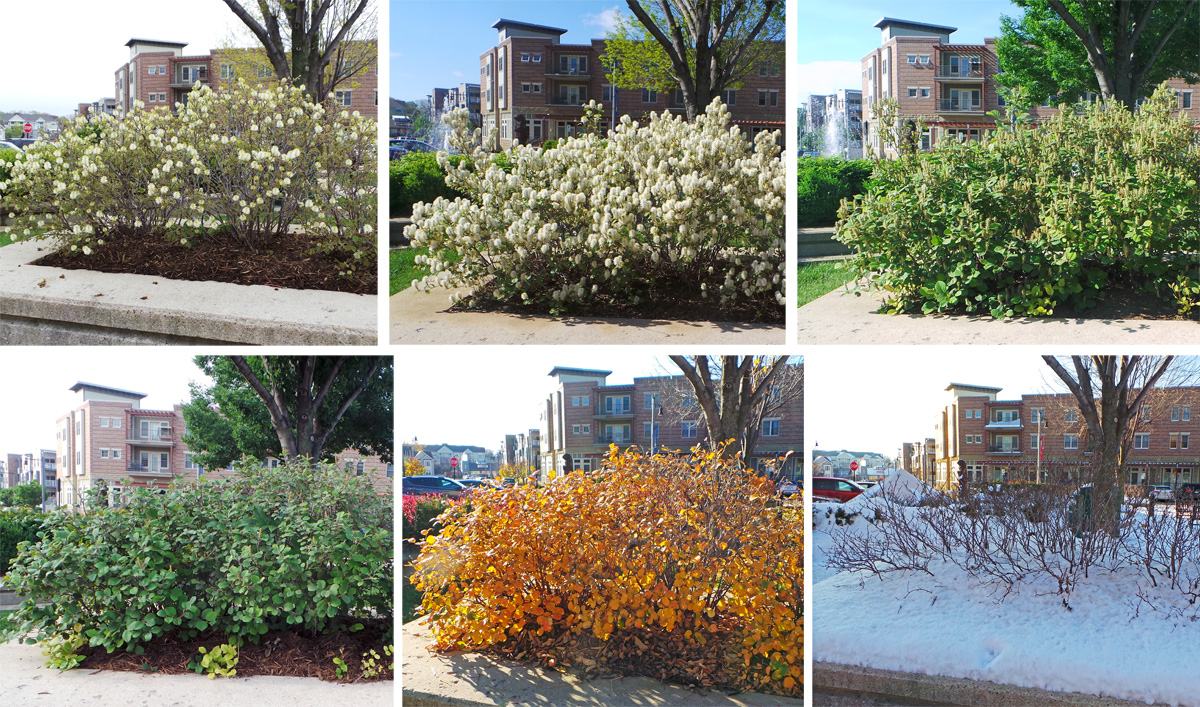
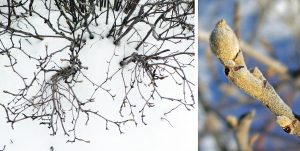
These low, dense, slow-growing but long-lived, multi-stemmed deciduous shrubs have downy twigs with a zig-zag branching habit, offering interest when leafless. F. major, large or mountain fothergilla, is taller, reaching 6 to 10 feet tall and almost as wide with a rangy character, while F. gardenii, dwarf or coastal fothergilla, forms a rounded shrub 3-4 feet tall with a wider spread if allowed to sucker. Hybrids are intermediate in size and form.
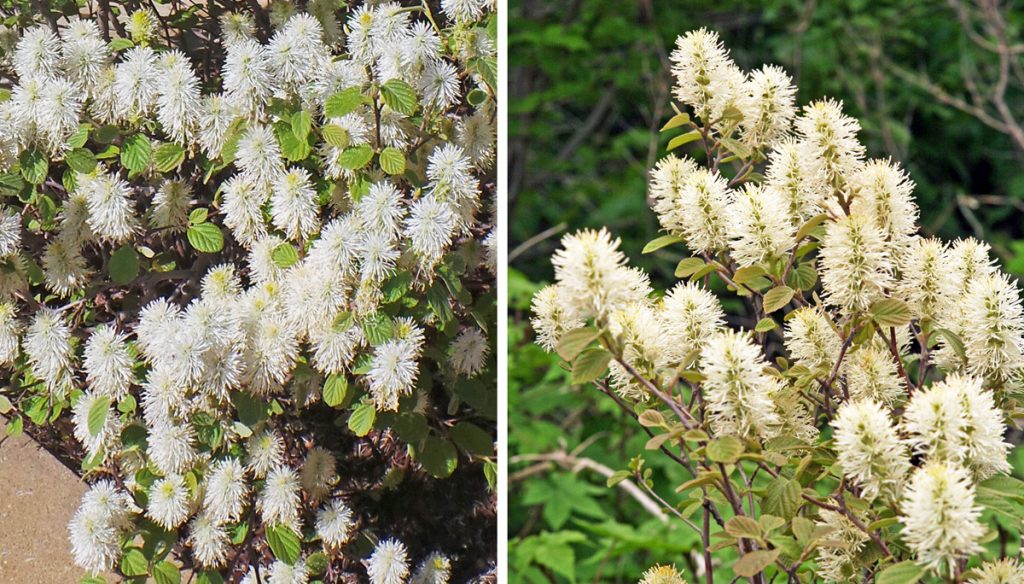
Terminal 1½ to 3-inch spikes of bottlebrush-like inflorescences are produced from very pubescent buds before the leaves in spring. Male and female flowers occur separately within each inflorescence (monoecious), and neither have petals. Only the male flowers are showy, with their clusters of prominent stamens with creamy-white filaments and yellow anthers. They have a sweet, vaguely honey-like fragrance that makes them attractive to bees and other pollinators. The flowers typically last for 2 to 3 weeks and then are covered up by the expanding new foliage.

The flowers are followed by olive-brown beaked capsules that mature in the fall, each with two shiny black seeds that are forcibly ejected when ripe.
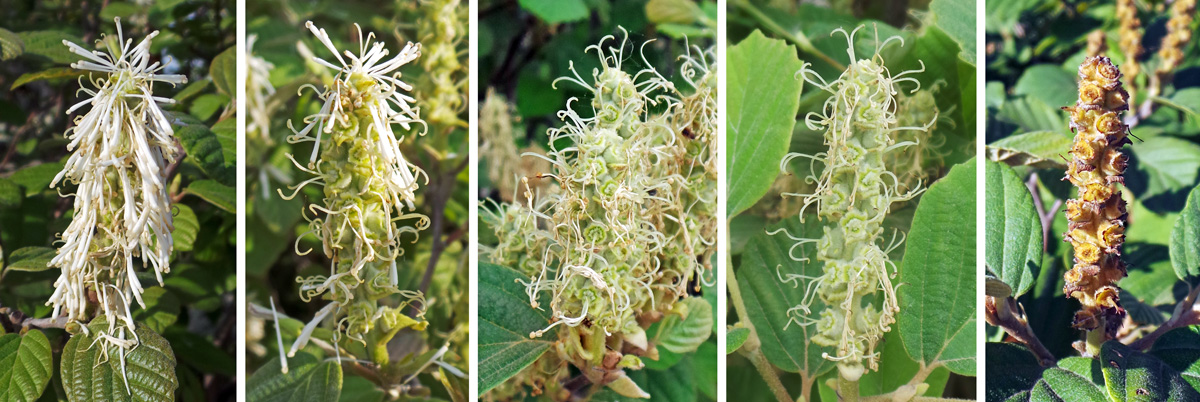
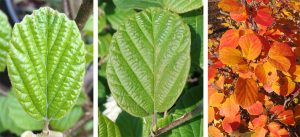
The broad, ovoid green to blue-green alternate leaves are variably pubescent, with a rounded base and pointed end. They have a slightly coarsely toothed upper margin (from mid-point to the apex) and a ridged or quilted appearance. The base of the leaf is symmetric in F. gardenii, while that of F. major is strongly asymmetric, and the leaves of the latter species are larger. The leathery foliage remains attractive throughout the season and develops brilliant yellow, orange, red and/or burgundy colors late in the fall – often with all these colors combined on one shrub. The degree of coloration is affected by sunlight, moisture levels, and temperature, as well as genetics, so the display can be variable from location to location and by year.
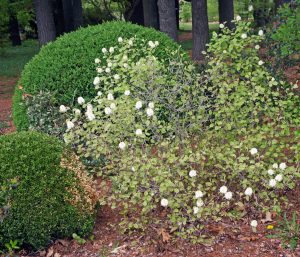
Use fothergilla as a specimen plant in a cottage garden, as accent plants in foundation plantings (the low growing types are great for under windows as they won’t ever get tall enough to block the view), as part of mixed perennial and shrub gardens or borders, for informal hedges or in masses, or naturalized in woodland gardens as it competes fairly well with tree roots. Place where the fragrance can be appreciated or against a dark-colored wall or in front of evergreens where the darker backdrop will set off the flowers and fall color. They combine well with rhododendrons, ornamental grasses, ferns, dwarf evergreens, ninebarks, viburnums and dogwoods. Fothergilla is a good alternative to the invasive Asian burning bush (E. alatus) for its bright fall color.
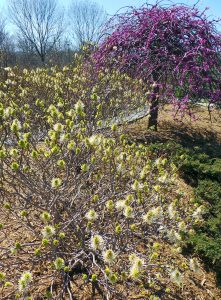
Grow fothergilla in full sun to light shade in rich, well-drained slightly acidic soil. F. gardenii does best in moist soil, while F. major and the hybrids tend to be more adaptable to a wider range of soil and moisture conditions. Flowering and fall color tends to be better on plants in full sun but in hotter climates plants they may perform better with some later afternoon shade. This shrub has no significant insect or disease problems and is not favored by deer or rabbits. It requires little maintenance other than light pruning to remove any unwanted suckers or damaged branches immediately after flowering. F. gardenia will spread to form colonies if suckers are not promptly removed. To encourage faster growth, fertilize in spring with an acid fertilizer. In rich soils it will not need any fertilization.
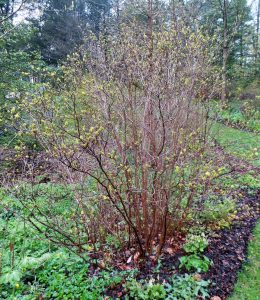
Fothergillas are most commonly propagated from cuttings as the seeds are difficult to germinate (and cuttings are necessary to maintain the hybrids or cultivars). Softwood cuttings taken in late spring through mid-summer and cuttings from suckers or root pieces are relatively easy to root.
Because there is great variation in environmental preferences, size and other characteristics between the two species and hybrids, it is important to plant a species or cultivar that is suited to local growing conditions. Some selections include:
- ‘Arkansas Beauty’ – is a F. major selection that is durable, coming from a population growing in a relatively dry habitat but it is a sparse bloomer with poor fall color.
- Beaver Creek™ – is a cultivar of F. x intermedia (‘KLMtwo’) selected by Roy Klehm that grows 2 to 3 feet high, with a dense rounded form and blue-green leaves with fall color that is bright yellow to red.
- ‘Blue Mist’ – is a selection of F. gardenii introduced by the Morris Arboretum in Philadelphia that grows 2-3 feet high and 3-4 feet wide. It has good blue leaf color during the summer, but fall color is not as good as many other cultivars.
- ‘Blue Shadow’ – is a sport of ‘Mt. Airy’ (F. x intermedia, despite often being labeled as F. gardenii) of medium height with a more mounded shape and intense powder blue leaves (similar in color to blue hostas such as ‘Hadspen Blue’ and ‘Blue Mouse Ears’), but doesn’t have appreciable fall color.
- ‘Harold Epstein’ – is a very compact green-leaved variety of F. gardenii named after a well-known rock gardener and popularized by the Arnold Arboretum. It only gets about 12-15 inches tall, with good vigor and fall color.
- ‘Jane Platt’ – is an older, durable cultivar of F. gardenii that originated in the Portland, Oregon garden of Jane and John Platt. It has green leaves and only gets 2 feet tall and wide, but its fall color is not as good as many others.
- May Bouquet™ (‘Klmsixteen’) – another selection of F. x intermedia by Roy Klehm with large, rounded flowers and yellow to apricot fall color on a tall plant up to 6-8 feet.
-
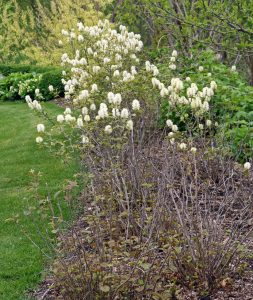
Fothergilla ‘Mt. Airy’ in early spring at Olbrich Gardens, Madison, WI.
‘Mt. Airy’ – is a hybrid (F. x intermedia) discovered at Mount Airy Arboretum in Cincinnati, Ohio by Dr. Michael Dirr of the University of Georgia where the species were growing near each other (which they do not in nature). It only grows 4-5 feet tall and wide with an upright habit and has larger flowers and more intense fall color. - ‘Red Licorice’ – this low-growing selection of F. x intermedia with dark red fall foliage was introduced from Bernheim Arboretum in Clermont, KY (south of Louisville).
- Red Monarch™ – is another hybrid F. x intermedia by Roy Klehm with spectacular red fall color that is hardy to zone 4.
- ‘Windy City’ – is a hybrid (F. x intermedia) that grows 3 to 4 feet high and wide, with upright form and outstanding fall color that is hardy to zone 4.
– Susan Mahr, University of Wisconsin – Madison





 Silver Leaf
Silver Leaf Red Star Rust
Red Star Rust Tree Species Recommended for Fall Planting
Tree Species Recommended for Fall Planting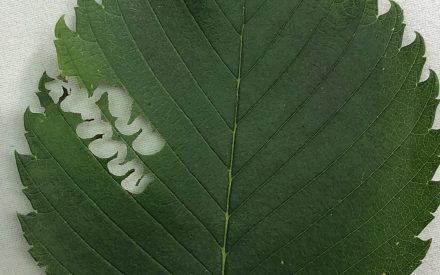 Elm Zigzag Sawfly
Elm Zigzag Sawfly


